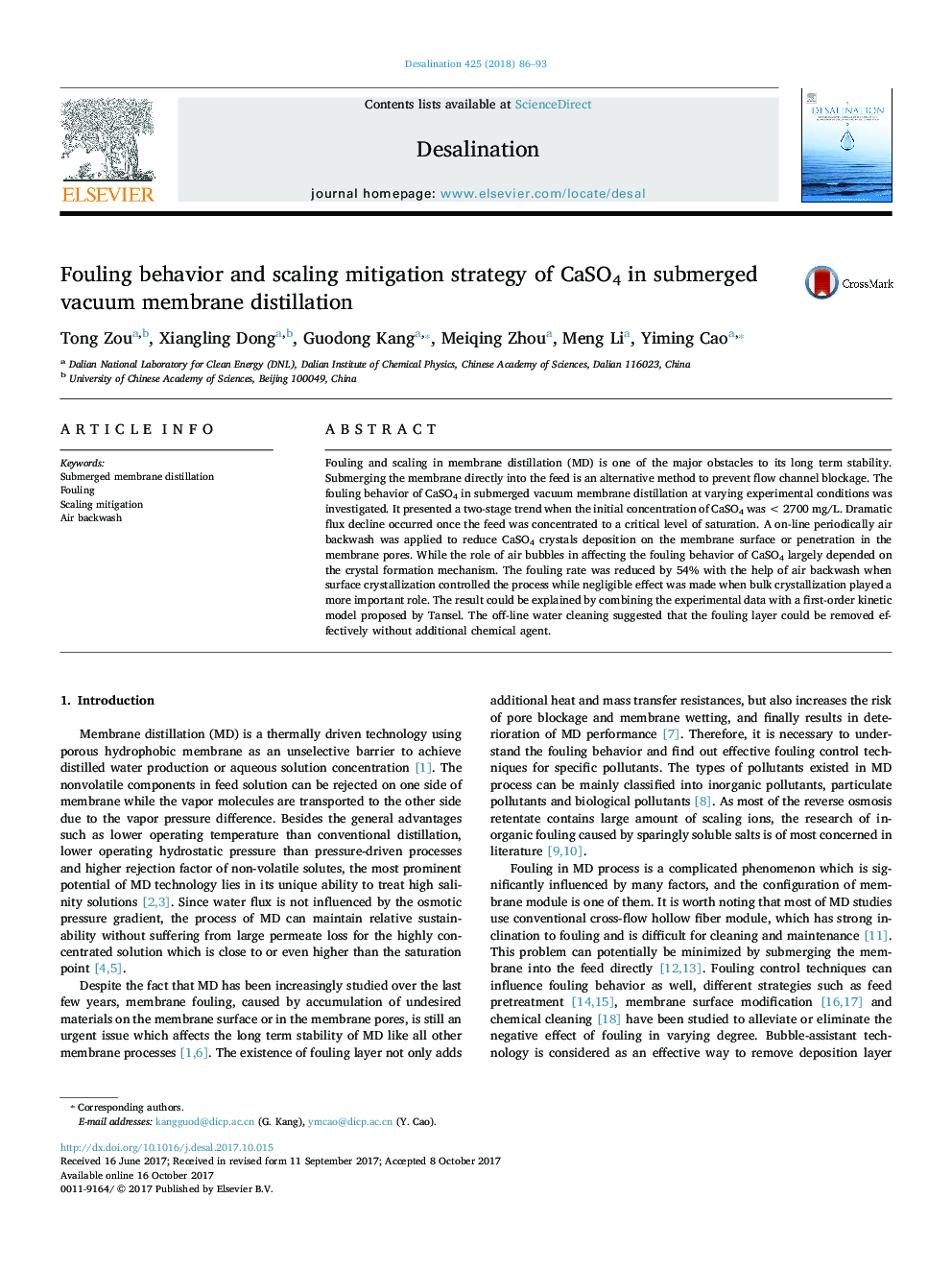| کد مقاله | کد نشریه | سال انتشار | مقاله انگلیسی | نسخه تمام متن |
|---|---|---|---|---|
| 4987512 | 1455270 | 2018 | 8 صفحه PDF | دانلود رایگان |
- SVMD was utilized for treatment of saline solutions containing saturated sparely salt.
- Different crystal formation mechanisms leaded to different fouling behaviors.
- The role of air backwash played in scaling mitigation was largely depended on crystal formation mechanism.
- The fouling behavior could be explained by combining the experimental data with an empirical flux decline model.
Fouling and scaling in membrane distillation (MD) is one of the major obstacles to its long term stability. Submerging the membrane directly into the feed is an alternative method to prevent flow channel blockage. The fouling behavior of CaSO4 in submerged vacuum membrane distillation at varying experimental conditions was investigated. It presented a two-stage trend when the initial concentration of CaSO4 was <Â 2700Â mg/L. Dramatic flux decline occurred once the feed was concentrated to a critical level of saturation. A on-line periodically air backwash was applied to reduce CaSO4 crystals deposition on the membrane surface or penetration in the membrane pores. While the role of air bubbles in affecting the fouling behavior of CaSO4 largely depended on the crystal formation mechanism. The fouling rate was reduced by 54% with the help of air backwash when surface crystallization controlled the process while negligible effect was made when bulk crystallization played a more important role. The result could be explained by combining the experimental data with a first-order kinetic model proposed by Tansel. The off-line water cleaning suggested that the fouling layer could be removed effectively without additional chemical agent.
Journal: Desalination - Volume 425, 1 January 2018, Pages 86-93
